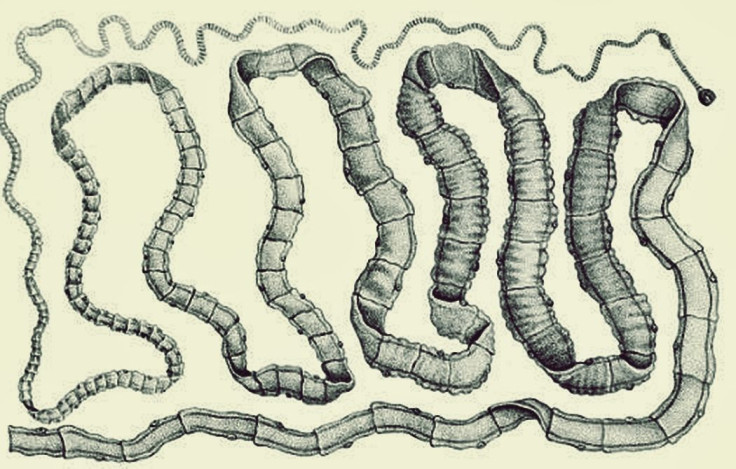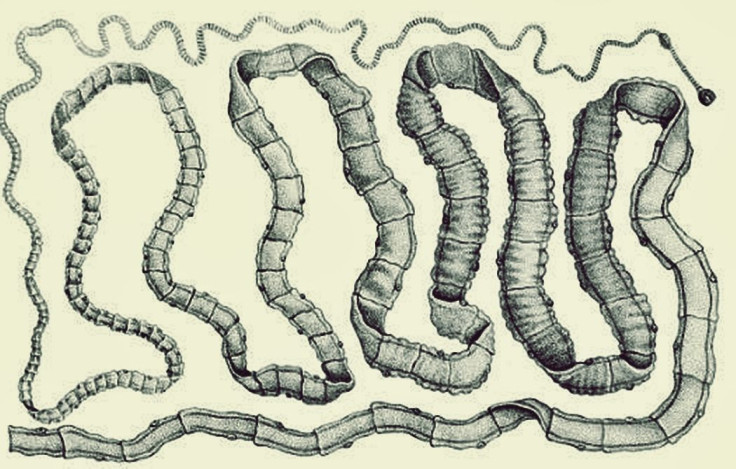Woman Undergoes Tumor Surgery, Doctors Find Tapeworm Instead

Just the mere mention of the word “tapeworm” is bound to set your skin crawling and your stomach poised to vomit in disgust.
Imagine a parasite that can grow to the astonishing length of 25 meters living in a person’s intestines and the unfortunate victim doesn’t even know it’s there. Left undetected, this menace can survive for as long as 30 years in a human host, according to Mayo Clinic.
Many people with intestinal tapeworm infection don't exhibit symptoms such as nausea, diarrhea, abdominal pain and weakness, weight loss and a craving for salt.
Now imagine a tapeworm infesting your brain. This condition, which is super rare in the U.S., is called neurocysticercosis. It’s caused by an infection with Taenia solium, a tapeworm found in pigs.
Unknown to most of us, neurocysticercosis is a common cause of seizures worldwide. It’s been called "arguably the most common parasitic disease of the human nervous system” and a "hidden epidemic.”
This was the sad fate of Rachel Palma, 42, from Middletown, New York. She consulted with doctors at Mount Sinai Hospital complaining of weird and perplexing symptoms such as hallucinations, insomnia and “horrific nightmares” that began without warning in early 2018.
Palma said her right hand sometimes went limp altogether and she’d drop things. She was also having trouble finding the right words. She also made phone calls to her family that she didn’t remember.
“My episodes were getting more and more bizarre,” said Palma. “There were days that I didn’t know where I was.”
She’d been to the doctors several times after her symptoms manifested, but the doctors she consulted with were unable to find a cause. An MRI scan of her head eventually revealed an important clue. Her doctors said the MRI showed a lesion about the size of a marble on the left side of her brain.
The lesion was located right next to the area of the brain that controls speech and it was discovered when the MRI was done with contrast. This finding suggested a malignant brain tumor, said Dr. Jonathan Rasouli, chief neurosurgery resident at the Icahn School of Medicine at Mount Sinai in New York City, who was part of the team that treated Palma.
Rasouli explained that the left side of the brain in right-handed people controls language and executive functions.
Doctors told Palma she might have a cancerous brain tumor requiring surgery, and she assented.
“My husband and I were both in shock and we just wanted it taken care of,” Palma said when she heard the diagnosis. “I never really allowed myself to think that it was cancer.”
Palma's brain surgery took place last fall. When Dr. Raj Shrivastava, a neurosurgeon at Mount Sinai Hospital, and Rasouli opened Palma’s skull during surgery, they expected to find a typical brain tumor.
Instead, what they discovered was “this very firm, very well encapsulated thing. It looked like a quail egg,” Rasouli recalled. He and Shrivastava removed the thing in one piece and cut it open it to see what was inside.
“Sure enough, a baby tapeworm came out of that lesion,” said Rasouli.
The medical team sighed with relief on behalf of the patient. In their minds, Palma’s prognosis was now much better than if they’d found a malignant brain tumor.
“She had a single parasite in her head that we were able to take out. We were very happy....It was one of those rare situations where you see a parasite and you’re like, wow this is great!”
Neurocysticercosis is a leading cause of adult onset epilepsy worldwide, said the U.S. Centers for Disease Control and Prevention (CDC). About 1,000 people are hospitalized for neurocysticercosis in the U.S. every year. Most patients come from countries where the disease is common, including Latin America.

Published by Medicaldaily.com



























